#Latvian National Armed Forces
Text
Here are 10 (more) featured Wikipedia articles. Links and summaries are below the cut.
Black American Sign Language (BASL) or Black Sign Variation (BSV) is a dialect of American Sign Language (ASL) used most commonly by deaf African Americans in the United States. The divergence from ASL was influenced largely by the segregation of schools in the American South.
Cai Lun (Chinese: 蔡伦; courtesy name: Jingzhong (敬仲); c. 50–62 – 121 CE), formerly romanized as Ts'ai Lun, was a Chinese eunuch court official of the Eastern Han dynasty. He is traditionally regarded as the inventor of paper and the modern papermaking process.
The Cock Lane ghost was a purported haunting that attracted mass public attention in 1762. The location was a lodging in Cock Lane, a short road adjacent to London's Smithfield market and a few minutes' walk from St Paul's Cathedral.
The indigenous people of the Everglades region arrived in the Florida peninsula of what is now the United States approximately 14,000 to 15,000 years ago, probably following large game. The Paleo-Indians found an arid landscape that supported plants and animals adapted to prairie and xeric scrub conditions. Large animals became extinct in Florida around 11,000 years ago. Climate changes 6,500 years ago brought a wetter landscape.
James William Humphreys (7 January 1930 – September 2003) was an English businessman and criminal who owned a chain of adult book shops and strip clubs in London in the 1960s and 1970s. He was able to run his business through the payment of large bribes to serving police officers, particularly those from the Obscene Publications Branch (OPB) of the Metropolitan Police.
The London Necropolis Company (LNC), formally the London Necropolis & National Mausoleum Company until 1927, was a cemetery operator established by Act of Parliament in 1852 in reaction to the crisis caused by the closure of London's graveyards in 1851. The LNC intended to establish a single cemetery large enough to accommodate all of London's future burials in perpetuity.
The Order of Brothelyngham was a group of men who, in the mid-14th century, formed themselves into a fake religious order in the city of Exeter, Devon. They may well have been satirising the church, which was commonly perceived as corrupt.
Phan Đình Phùng (Vietnamese: [faːn ɗîŋ̟ fûŋm]; 1847 – January 21, 1896) was a Vietnamese revolutionary who led rebel armies against French colonial forces in Vietnam. He was the most prominent of the Confucian court scholars involved in anti-French military campaigns in the 19th century and was cited after his death by 20th-century nationalists as a national hero.
The Tottenham Outrage of 23 January 1909 was an armed robbery in Tottenham, North London, that resulted in a two-hour chase between the police and armed criminals over a distance of six miles (10 km), with an estimated 400 rounds of ammunition fired by the thieves. The robbery, of workers' wages from the Schnurmann rubber factory, was carried out by Paul Helfeld and Jacob Lepidus, Jewish Latvian immigrants.
Volubilis (Latin pronunciation: [wɔˈɫuːbɪlɪs]; Arabic: وليلي, romanized: walīlī; Berber languages: ⵡⵍⵉⵍⵉ, romanized: wlili) is a partly-excavated Berber-Roman city in Morocco situated near the city of Meknes that may have been the capital of the Kingdom of Mauretania, at least from the time of King Juba II.
8 notes
·
View notes
Video
youtube
The [Latvian] Air Force has been supplemented with two ultra-light aircraft manufactured in Latvia
LTV Ziņu dienests
The National Armed Forces received two new aircraft shortly before the national holiday. The new aircraft are manufactured right here in Latvia. The planes are very manoeuvrable, can reach speeds of up to 350 kilometers per hour and consume a relatively small amount of fuel(..) [Aircraft manufactured in Latvia are the fastest aircraft of this type in the world. This is the company's first experience in cooperation with the military sphere, which turned out to be very successful. Airplanes for private individuals have been produced so far.]
#Latvia#Pelegrin Tarragon#aviation history#made in latvia#indigenous military industry#Baltic States#ultra-light aircraft#latvian air force#Northern Europe#NATO
4 notes
·
View notes
Text
Holidays 2.23
Holidays
Adria Asteroid Day
Armed Forces Day (Tajikistan)
Asian Corpsetwt Day [Every 23rd]
Bart Simpson Day
Billygoat Day (French Republic)
Curling Is Cool Day (Canada)
Defender of the Fatherland Day (Russia)
Defender of the Fatherland Day and Armed Forces Day (Belarus)
Diesel Engine Day
Easy Divorce Day
Ember Day
Emily Blunt Day
Emperor Naruhito Day (Japan)
ENA Day
Give FFA Day
Gutenberg Bible Day
Homeland Defenders’ Day (Kyrgzstan)
Inconvenience Yourself Day
International Day of Action Against US & NATO Military Bases
International Day of Mercury Control Commitment
International Dog Biscuit Appreciation Day
Mashramani (a.k.a. Mash Festival or Guyanese Republic Day; Guyana)
Meteni (Latvia)
Motherland Defenders’ Day (Russia, Transdniestria)
Mount Fuji Day (Japan)
National Aviation Day (Canada)
National Casbah Day (Algiers)
National Day (Brunei)
National Helplines Awareness Day (UK)
National Hospitality Workers Appreciation Day
National Rationalization Day
National Rudy Day
National Tile Day
National Wear Blue for FFA
Pebbles Day
Pinocchio Day
Play Tennis Day
Printed Book Day
Quiet Day
Red Army Day (former USSR)
Shropshire Day (UK)
Student Press Freedom Day
Vaudeville Day
Vitamin Day
Wear Your Favorite Hockey Jersey Day
Work Your Proper Hours Day [Varies]
World Peace and Understanding Day
World Rotary Day
Food & Drink Celebrations
Banana Bread Day
Imperial Stout Day
Jamaican Patty Day (Canada)
Tootsie Roll Day
4th & Last Friday in February
Fry Day (Pastafarian; Fritism) [Every Friday]
International Stand Up to Bullying Day [Last Friday] (Also 3rd Friday in Nov)
Katsuyama Sagicho begins (Japan) [Last Friday]
National CSA Day (Small Farm Central) [Last Friday]
National Girl Scout Cookie Weekend begins [Last Friday thru Sunday]
National Skip the Straw Day [4th Friday]
Texas Cowboy Poetry Gathering begins [Last Friday]
Thank a Resident Day [4th Friday]
Yukon Heritage Day (Canada) [Last Friday]
Independence & Related Days
Evanland (Declared; 2016) [unrecognized]
February Revolution Day (Russia; 1917)
Mashramani (a.k.a. Republic Day: Proclamation of Co-Operative Republic; Guyana; 1970)
Mississippi Re-Admitted to the Union (1870)
Ondo State Day (Ondo, Nigeria)
Sayville (a.k.a. Dominion of Sayville; Declared; 2020) [unrecognized]
Festivals Beginning February 23, 2024
Belgrade International Film Festival (Belgrade, Serbia) [thru 3.3]
Florida Gourd Festival (Melbourne, Florida) [thru 2.25]
The Joy of Sake (Honolulu, Hawaii)
Latvian Book Fair (Rigo, Latvia) [thru 2.25]
Sandestin Gumbo Festival (Destin, Florida) [thru 2.24]
St. Petersburg Seafood & Music Festival (St. Petersburg, Florida) [thru 2.25]
Virginia Wine Expo (Richmond, Virginia) [thru 3.3]
Yanshui Beehive Fireworks Festival (Tainan, Taiwan) [thru 2.24]
Feast Days
Alexander Akimetes (Christian; Saint)
Boisil, Prior of Melross (Christian; Saint)
Celebrate Vaccines Day (Pastafarian)
Day of Ebisu (Japanese God of Fortune)
Dositheus, Monk of Palestine (Christian; Saint)
Feast of Friends (Pagan)
Festival of the Boundary Markers (Ancient Rome)
Franz von Stuck (Artology)
George Frederic Watts (Artology)
Herb Garden Planting Day (Starza Pagan Book of Days)
Kazimir Malevich Watts (Artology)
Lola and Tamir (Muppetism)
Milburga of Shropshire (Christian; Saint)
Monty Python Day (Church of the SubGenius; Saint)
Ovid (Positivist; Saint)
Peter Damian (Christian; Saint)
Polycarp of Smyrna (Christian; Saint)
Remember the Almo Day (Pastafarian)
Serenus the Gardener (Christian; Martyr)
The Terminalia (Festival of Boundaries; also End of Old Roman Year Festival)
Tom Wesselmann (Artology)
W.E.B. DuBois (Writerism)
Willigis (Christian; Saint)
Lucky & Unlucky Days
Tomobiki (友引 Japan) [Good luck all day, except at noon.]
Unfortunate Day (Pagan) [13 of 57]
Premieres
All’s Well That Ends Well (Terrytoons Cartoon; 1940)
Annihilation (Film; 2018)
Apple & Onion (Animated TV Series; 2018)
The Band Concert (Disney Cartoon; 1935)
Bend Sinister, by Vladimir Nabokov (Novel; 1947)
Caviar (Terrytoons Cartoon; 1930)
DC Showcase: The Spectre (WB Cartoon; 2010)
Even Cowgirls Get the Blues, by Tom Robbins (Novel; 1976)
FanMail, by TLC (Album; 1999)
Foxy by Proxy (WB MM Cartoon; 1952)
Game Night (Film; 2018)
Go Fly a Kit (WB MM Cartoon; 1957)
Harper (Film; 1966)
Henderson the Rain King, by Saul Bellow (Novel; 1959)
Interjections (Grammar Rock Cartoon; Schoolhouse Rock; 1974)
Justice League: Crisis on Two Earths (WB Animated Film; 2010)
Land of Black Gold, by Hergé (Graphic Novel; 1950) [Tintin #15]
Last Bus to Woodstock, by Colin Dexter (Novel; 1975)
The Last Straw (Terrytoons Cartoon; 1934)
Les Sylphides, by Frédéric Chopin (Ballet; 1907)
Man of Tin (Phantasies Cartoon; 1940)
Pinocchio (Animated Disney Film; 1940)
Public Speaking (Documentary Film; 2011)
The Saint in Miami, by Leslie Charteris (Novel; 1940) [Saint #23]
Scenes from a Mall (Film; 1991)
Scooby-Doo! The Sword and the Scoop (WB Animated Film; 2021)
The Slim Shady LP, by Eminem (Album; 1999)
Things Fall Apart, by The Roots (Album; 1999)
This Land Is Your Land, written by Woody Guthrie (Song; 1940)
Trainspotting (Film; 1996)
Today’s Name Days
Raffaela, Romana (Austria)
Grozdan, Polikarp, Romana (Croatia)
Svatopluk (Czech Republic)
Papias (Denmark)
Lehar, Leho, Lehto (Estonia)
Aslak (Finland)
Lazare (France)
Polyk, Raffaela, Romana (Germany)
Polychronis, Polykarpos (Greece)
Alfréd (Hungary)
Livio, Policarpo, Renzo, Romana, Romina, Sereno, Teo (Italy)
Almants, Haralds (Latvia)
Butvilė, Gantautas, Romana, Severinas (Lithuania)
Torstein, Torunn (Norway)
Bądzimir, Damian, Florentyn, Łazarz, Piotr, Roma, Romana, Seweryn (Poland)
Policarp (Romania)
Anna, Valentina (Russia)
Roman (Slovakia)
Policarpo (Spain)
Torsten, Torun (Sweden)
Boswell, Gloria, Gloriana, Glory, Reilley, Riley, Rylan, Rylee, Ryleigh, Ryley, Rylie (USA)
Today is Also…
Day of Year: Day 54 of 2024; 312 days remaining in the year
ISO: Day 5 of week 8 of 2024
Celtic Tree Calendar: Nuin (Ash) [Day 6 of 28]
Chinese: Month 1 (Bing-Yin), Day 14 (Ding-Si)
Chinese Year of the: Dragon 4722 (until January 29, 2025)
Hebrew: 14 Adair I 5784
Islamic: 13 Sha’ban 1445
J Cal: 24 Grey; Threesday [24 of 30]
Julian: 10 February 2024
Moon: 99%: Waxing Gibbous
Positivist: 26 Homer (2nd Month) [Ovid]
Runic Half Month: Sigel (Sun) [Day 15 of 15]
Season: Winter (Day 65 of 89)
Week: 3rd Week of February
Zodiac: Pisces (Day 5 of 30)
0 notes
Text
Holidays 2.23
Holidays
Adria Asteroid Day
Armed Forces Day (Tajikistan)
Asian Corpsetwt Day [Every 23rd]
Bart Simpson Day
Billygoat Day (French Republic)
Curling Is Cool Day (Canada)
Defender of the Fatherland Day (Russia)
Defender of the Fatherland Day and Armed Forces Day (Belarus)
Diesel Engine Day
Easy Divorce Day
Ember Day
Emily Blunt Day
Emperor Naruhito Day (Japan)
ENA Day
Give FFA Day
Gutenberg Bible Day
Homeland Defenders’ Day (Kyrgzstan)
Inconvenience Yourself Day
International Day of Action Against US & NATO Military Bases
International Day of Mercury Control Commitment
International Dog Biscuit Appreciation Day
Mashramani (a.k.a. Mash Festival or Guyanese Republic Day; Guyana)
Meteni (Latvia)
Motherland Defenders’ Day (Russia, Transdniestria)
Mount Fuji Day (Japan)
National Aviation Day (Canada)
National Casbah Day (Algiers)
National Day (Brunei)
National Helplines Awareness Day (UK)
National Hospitality Workers Appreciation Day
National Rationalization Day
National Rudy Day
National Tile Day
National Wear Blue for FFA
Pebbles Day
Pinocchio Day
Play Tennis Day
Printed Book Day
Quiet Day
Red Army Day (former USSR)
Shropshire Day (UK)
Student Press Freedom Day
Vaudeville Day
Vitamin Day
Wear Your Favorite Hockey Jersey Day
Work Your Proper Hours Day [Varies]
World Peace and Understanding Day
World Rotary Day
Food & Drink Celebrations
Banana Bread Day
Imperial Stout Day
Jamaican Patty Day (Canada)
Tootsie Roll Day
4th & Last Friday in February
Fry Day (Pastafarian; Fritism) [Every Friday]
International Stand Up to Bullying Day [Last Friday] (Also 3rd Friday in Nov)
Katsuyama Sagicho begins (Japan) [Last Friday]
National CSA Day (Small Farm Central) [Last Friday]
National Girl Scout Cookie Weekend begins [Last Friday thru Sunday]
National Skip the Straw Day [4th Friday]
Texas Cowboy Poetry Gathering begins [Last Friday]
Thank a Resident Day [4th Friday]
Yukon Heritage Day (Canada) [Last Friday]
Independence & Related Days
Evanland (Declared; 2016) [unrecognized]
February Revolution Day (Russia; 1917)
Mashramani (a.k.a. Republic Day: Proclamation of Co-Operative Republic; Guyana; 1970)
Mississippi Re-Admitted to the Union (1870)
Ondo State Day (Ondo, Nigeria)
Sayville (a.k.a. Dominion of Sayville; Declared; 2020) [unrecognized]
Festivals Beginning February 23, 2024
Belgrade International Film Festival (Belgrade, Serbia) [thru 3.3]
Florida Gourd Festival (Melbourne, Florida) [thru 2.25]
The Joy of Sake (Honolulu, Hawaii)
Latvian Book Fair (Rigo, Latvia) [thru 2.25]
Sandestin Gumbo Festival (Destin, Florida) [thru 2.24]
St. Petersburg Seafood & Music Festival (St. Petersburg, Florida) [thru 2.25]
Virginia Wine Expo (Richmond, Virginia) [thru 3.3]
Yanshui Beehive Fireworks Festival (Tainan, Taiwan) [thru 2.24]
Feast Days
Alexander Akimetes (Christian; Saint)
Boisil, Prior of Melross (Christian; Saint)
Celebrate Vaccines Day (Pastafarian)
Day of Ebisu (Japanese God of Fortune)
Dositheus, Monk of Palestine (Christian; Saint)
Feast of Friends (Pagan)
Festival of the Boundary Markers (Ancient Rome)
Franz von Stuck (Artology)
George Frederic Watts (Artology)
Herb Garden Planting Day (Starza Pagan Book of Days)
Kazimir Malevich Watts (Artology)
Lola and Tamir (Muppetism)
Milburga of Shropshire (Christian; Saint)
Monty Python Day (Church of the SubGenius; Saint)
Ovid (Positivist; Saint)
Peter Damian (Christian; Saint)
Polycarp of Smyrna (Christian; Saint)
Remember the Almo Day (Pastafarian)
Serenus the Gardener (Christian; Martyr)
The Terminalia (Festival of Boundaries; also End of Old Roman Year Festival)
Tom Wesselmann (Artology)
W.E.B. DuBois (Writerism)
Willigis (Christian; Saint)
Lucky & Unlucky Days
Tomobiki (友引 Japan) [Good luck all day, except at noon.]
Unfortunate Day (Pagan) [13 of 57]
Premieres
All’s Well That Ends Well (Terrytoons Cartoon; 1940)
Annihilation (Film; 2018)
Apple & Onion (Animated TV Series; 2018)
The Band Concert (Disney Cartoon; 1935)
Bend Sinister, by Vladimir Nabokov (Novel; 1947)
Caviar (Terrytoons Cartoon; 1930)
DC Showcase: The Spectre (WB Cartoon; 2010)
Even Cowgirls Get the Blues, by Tom Robbins (Novel; 1976)
FanMail, by TLC (Album; 1999)
Foxy by Proxy (WB MM Cartoon; 1952)
Game Night (Film; 2018)
Go Fly a Kit (WB MM Cartoon; 1957)
Harper (Film; 1966)
Henderson the Rain King, by Saul Bellow (Novel; 1959)
Interjections (Grammar Rock Cartoon; Schoolhouse Rock; 1974)
Justice League: Crisis on Two Earths (WB Animated Film; 2010)
Land of Black Gold, by Hergé (Graphic Novel; 1950) [Tintin #15]
Last Bus to Woodstock, by Colin Dexter (Novel; 1975)
The Last Straw (Terrytoons Cartoon; 1934)
Les Sylphides, by Frédéric Chopin (Ballet; 1907)
Man of Tin (Phantasies Cartoon; 1940)
Pinocchio (Animated Disney Film; 1940)
Public Speaking (Documentary Film; 2011)
The Saint in Miami, by Leslie Charteris (Novel; 1940) [Saint #23]
Scenes from a Mall (Film; 1991)
Scooby-Doo! The Sword and the Scoop (WB Animated Film; 2021)
The Slim Shady LP, by Eminem (Album; 1999)
Things Fall Apart, by The Roots (Album; 1999)
This Land Is Your Land, written by Woody Guthrie (Song; 1940)
Trainspotting (Film; 1996)
Today’s Name Days
Raffaela, Romana (Austria)
Grozdan, Polikarp, Romana (Croatia)
Svatopluk (Czech Republic)
Papias (Denmark)
Lehar, Leho, Lehto (Estonia)
Aslak (Finland)
Lazare (France)
Polyk, Raffaela, Romana (Germany)
Polychronis, Polykarpos (Greece)
Alfréd (Hungary)
Livio, Policarpo, Renzo, Romana, Romina, Sereno, Teo (Italy)
Almants, Haralds (Latvia)
Butvilė, Gantautas, Romana, Severinas (Lithuania)
Torstein, Torunn (Norway)
Bądzimir, Damian, Florentyn, Łazarz, Piotr, Roma, Romana, Seweryn (Poland)
Policarp (Romania)
Anna, Valentina (Russia)
Roman (Slovakia)
Policarpo (Spain)
Torsten, Torun (Sweden)
Boswell, Gloria, Gloriana, Glory, Reilley, Riley, Rylan, Rylee, Ryleigh, Ryley, Rylie (USA)
Today is Also…
Day of Year: Day 54 of 2024; 312 days remaining in the year
ISO: Day 5 of week 8 of 2024
Celtic Tree Calendar: Nuin (Ash) [Day 6 of 28]
Chinese: Month 1 (Bing-Yin), Day 14 (Ding-Si)
Chinese Year of the: Dragon 4722 (until January 29, 2025)
Hebrew: 14 Adair I 5784
Islamic: 13 Sha’ban 1445
J Cal: 24 Grey; Threesday [24 of 30]
Julian: 10 February 2024
Moon: 99%: Waxing Gibbous
Positivist: 26 Homer (2nd Month) [Ovid]
Runic Half Month: Sigel (Sun) [Day 15 of 15]
Season: Winter (Day 65 of 89)
Week: 3rd Week of February
Zodiac: Pisces (Day 5 of 30)
1 note
·
View note
Text
Swedish Army Receives First Batch of New Patria 6x6 Wheeled Armored Vehicles
The Swedish Army has officially received the first batch of new Patria's 6x6 wheeled armoured vehicles, in Sweden called Pansarterrängbil 300. The vehicles, which were manufactured in Finland, will be part of the current expansion of Swedish Armed Forces. These Patria 6x6 armoured vehicles will be based at Livgardet regiment in Kungsängen, near Stockholm and further south in Sweden. An official hand-over ceremony marking the delivery took place at Ground Combat School in Kvarn on 26 October, 2023. Patria’s 6x6 solution is already in use in Finland and Latvia, and Germany has joined the Patria 6x6 -based Common Armoured Vehicle System (CAVS) programme.
In early 2020 Finland and Latvia agreed a joint development programme for Common Armoured Vehicle Systems (CAVS) based on Patria 6x6. The programme remains open for other nations to join it. As a result of CAVS Programme, Latvia announced an order for over 200 vehicles. It is planned that from 2023 Patria 6x6 for needs of Latvian army will be fully produced in Cēsis, Latvia with partial production starting in 2022. First vehicles were delivered in October 2021. Finland followed with a letter of intent to procure 160 vehicles in 2023. The FDF signed an agreement with Patria to acquire three pre-series vehicles delivered by summer 2022 for test use before the final serial order.
The Swedish Army has officially received the first batch of new Patria’s 6×6 wheeled armoured vehicles, in Sweden called Pansarterrängbil 300. The vehicles, which were manufactured in Finland, will be part of the current expansion of Swedish Armed Forces. These Patria 6×6 armoured vehicles will be based at Livgardet regiment in Kungsängen, near Stockholm and further south in Sweden. An official…
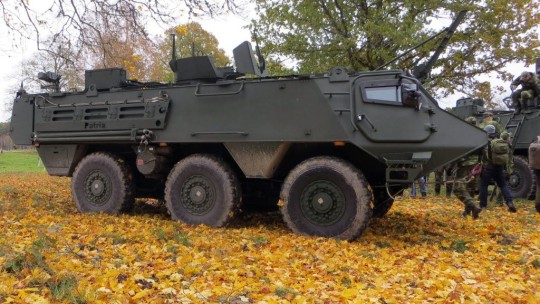
View On WordPress
0 notes
Text
Ammunition Market Share, Trend & Growth Forecast to 2032
As per a recent research report, Ammunition Market surpass USD 43 Bn by 2032.
The ammunition market is poised to register significant growth through 2030 owing to increasing international conflicts. In addition, a surge in sporting competitions and demand for recreational shooting is also likely to positively impact market growth in the forecast timeframe.
Request for Sample Copy report @ https://www.gminsights.com/request-sample/detail/261
Moreover, key players in this industry have been engaging in rigorous research and development activities related to ammunitions, which have benefited the product landscape. For instance, in July 2022, AMMO Inc., the owner of GunBroker.com and a prominent player in the ammunition market, announced the retention of CORE IR, which will assist the firm with shareholder communications and investor relations. CORE IR agreed to help AMMO expand market awareness by promoting its growth strategies and business model to retail investments and institutional communities.
Moreover, with prevalent geo-political instability, countries around the world are trying to increase their ammunition production, fostering product outlook. To cite an instance, in July 2022, the Latvian Ministry of Defense introduced compulsory military service and announced its plans to create a state capital company to supply the country with ammunition. This plan was intended to aid the growth of private sector companies in the sector.
The ammunition market has been bifurcated in terms of application, caliber, and region.
On the basis of application, the market has been divided into civil and defense. The defense segment is expected to register robust growth at a CAGR of about 4.3% through the study timeline on account of surging prevalence of terrorism.
Based on caliber, the ammunition market has been divided into medium caliber, artillery, small caliber, large caliber, and mortar. Among these, the artillery segment is expected to grow at a CAGR of around 5% to attain above $7.3 billion in revenue by 2030. The medium caliber segment holds the lowest market share and is slated to exhibit moderate growth at over 4.2% CAGR to exceed a valuation of $2.8 billion by the end of the assessment timeframe.
Request for customization this report @ https://www.gminsights.com/roc/261
In the regional context, the North America ammunition industry is anticipated to grow at a rate of about 4.1% CAGR through 2030. Increasing efforts by the U.S. government to control terrorism and ensure the safety of its citizens are speculated to impel regional business progress.
Meanwhile, the Middle East & Africa ammunition market is expected to depict a CAGR of approximately 5% to be valued at around $3.98 Billion by 2030. The present cross-border conflicts among nations, such as Syria, Libya, and Yemen, have driven the demand for advanced weapons and ammunition in the MEA region, which is foreseen to bolster market growth.
Partial chapters of report table of contents (TOC):
Chapter 2 Executive Summary
2.1 Ammunition industry 3600 synopsis, 2018 - 2030
2.1.1 Business trends
2.1.2 Caliber trends
2.1.3 Application trends
2.1.4 Regional trends
Chapter 3 Ammunition Industry Insights
3.1 Industry segmentation
3.2 Industry ecosystem analysis
3.2.1 Manufacturers
3.2.2 Supply chain analysis
3.2.3 Value chain disruption due to COVID-19
3.2.4 End-users
3.2.5 Vendor matrix
3.2.5.1 List of key manufacturers/suppliers
3.2.5.2 List of key potential customers
3.3 Defense spending by country, 2021
3.4 Technology & innovation landscape
3.5 Industry impact forces
3.5.1 Growth drivers
3.5.1.1 Rising terrorism activities and border conflicts
3.5.1.2 Increasing recreational & leisure activities like hunting and shooting
3.5.1.3 Escalating arms race in Asia Pacific, MEA
3.5.2 Industry pitfalls & challenges
3.5.2.1 Stringent government norms
3.6 Regulatory trends
3.6.1 North America
3.6.2 Europe
3.6.3 Asia Pacific
3.6.4 Latin America
3.6.5 Middle East & Africa
3.7 Growth potential analysis, 2021
3.8 Competitive landscape
3.8.1 Company market share, 2021
3.8.2 Strategy dashboard
3.9 Porter's analysis
3.9.1 Buyer power
3.9.2 Supplier power
3.9.3 Industry rivalry
3.9.4 Threat of substitutes
3.9.5 Threat of new entrants
3.9.6 COVID-19 impact on pricing
3.10 PESTEL analysis
About Global Market Insights:
Global Market Insights, Inc., headquartered in Delaware, U.S., is a global market research and consulting service provider; offering syndicated and custom research reports along with growth consulting services. Our business intelligence and industry research reports offer clients with penetrative insights and actionable market data specially designed and presented to aid strategic decision making. These exhaustive reports are designed via a proprietary research methodology and are available for key industries such as chemicals, advanced materials, technology, renewable energy and biotechnology.
Contact us:
Aashit Tiwari
Corporate Sales, USA
Global Market Insights Inc.
Toll Free: +1-888-689-0688
USA: +1-302-846-7766
Europe: +44-742-759-8484
APAC: +65-3129-7718
Email: [email protected]
0 notes
Text
Photo by Hulton Archive on Getty Images - A POW Georgian volunteer of the German army, with the rank of captain, indicates to US Army officers the disposition of German forces facing the Utah beach on the first day of the Normandy landings, June 6, 1944.
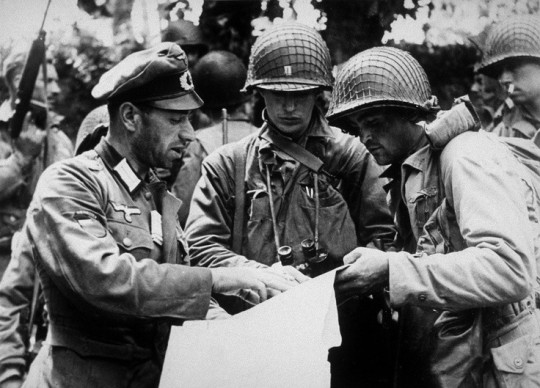
The Military Rank website
Written By Mark Stone
Hauptmann Lomatidze Ost Battalion 795 Georgien Bataillon 709 Static Infanterie Division:
Hauptmann Lomatidze of the 795 Georgien Bataillon formerly a Red Army major, is giving information to US officers near Utah beach during the D-Day., 1944.
Lomatidze was captured by the German Army during Operation Barbarossa and was recaptured with his unit by American troops near Utah Beach. The Georgian Legion was formed from émigrés living in Western Europe after the 1921 Soviet invasion of Georgia, combined with Soviet prisoners of war of Georgian origin who chose to fight for Germany rather than submit to often brutally poor living conditions in POW camps. Formed in December 1941. The Georgians trained in western Ukraine and became operational in the autumn of 1942. At least 30,000 Georgians served in the German armed forces during World War II. The Georgians served in thirteen field battalions of up to 800 men, each made up of five companies. Georgians were also found in the North Caucasian Legion and in other Caucasian ethnic legions. The Georgian military formations were commanded by Shalva Maglakelidze, Michel-Fridon Zulukidze, Col. Solomon Nicholas Zaldastani, and other officers formerly of the Democratic Republic of Georgia (1918–21). The 709th Static Infantry Division was a coastal defense unit assigned to protect the eastern and northern coasts of the Cotentin Peninsula. This included the sites of the Utah Beachhead and the US airborne landing zones. Its sector covered over 250 km, running in a line from the northeast of Carentan, via Barfleur-Cherbourg-Cap de la Hague to a point west of Barneville. This included the 65 km land front of Cherbourg. The Division included a number of Ostlegionen units of various nationalities, mainly from the occupied countries of eastern Europe. These were a mixture of volunteers, conscripts, and former Soviet prisoners-of-war who had chosen to fight in the German Army rather than suffer the harsh conditions of prisoners. Two battalions of the 739th Grenadier Regiment were Georgien battalions. Two further battalions were also designated as Ost units in the divisional order of battle. Elements of the 709th were heavily engaged on D-Day, defending the peninsula against US airborne landings and against the US 4th Infantry Division landing on Utah Beach. Ten days later the division reported that it had sustained around 4,000 casualties from an initial strength of over 12,000. The commander, General Schlieben surrendered Festung Cherbourg to the Americans on 29 June 1944.
Editor's Note. - There were Varlam Lomidze and Shalva Loladze in 882th, and captain Lomtatidze in 795th. Maglakelidze collaborated with NKVD/KGB. Looking through the historical archives of the Second World War, it is noteworthy that he (his unit 882th) did not win a single battle, but did not lose a single one either. In 1922, he was among 62 prisoners whom the Soviet Georgia authorities allowed to go to Germany at the invitation of the exiled Georgian ambassador to Germany, Vladimir Akhmeteli. But he settled in Riga with his Latvian wife Maria Grasis and son Gaioz. His grandson Vamekh is a Vietnam War veteran.
1 note
·
View note
Text
NATO's 16-nation military exercise Baltops 22 to be held in the Baltic Sea from 5-17 June
NATO’s 16-nation military exercise Baltops 22 to be held in the Baltic Sea from 5-17 June
NATO’s annual large-scale international military exercise Baltops 22 with the participation of 16 countries will be held in the Baltic Sea region from June 5 to 17, LSM portal reports with reference to the Latvian Armed Forces.
“Large-scale annual international military exercise Baltops 22 will be held in the Baltic Sea region from June 5 to 17 with participation of 14 NATO members – USA,…
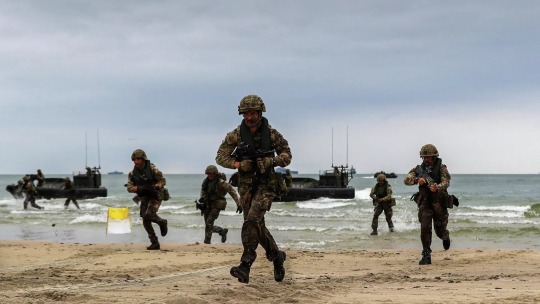
View On WordPress
0 notes
Photo

The Latvian Armed Forces during Operation Northern Strike 2014 near Rogers City, Michigan.
The U.S. Air National Guard photo by Master Sgt. Scott Thompson (2014).
#latvian armed forces#latvian army#latvian military#camo#camouflage#latvian camouflage#latvian camo#latvian army camouflage
7 notes
·
View notes
Text
Naked Boys Reading Presents: Short Serials with Season Butler

Photo by Christa Holka.
In the journalistic heyday of Victorian-era fiction, the serial was a place to feast on the literary prowess of the writers and cultural denizens of their time — a place to bear witness to a writer's creative process in episodic installments, from Charles Dickens in The Pickwick Papers to Harriet Beecher Stowe in The National Era.
Naked Boys Reading (NBR) — a literary salon presented at Ace Hotel London Shoreditch every other month — carries that proverbial torch here with the first of their “Short Serials.” Over the next few months, NBR will be sharing serialized fiction by some of their favorite queer authors and allies.
First on the docket is author Season Butler. Born in the States, Butler spends her time writing and teaching between the UK and Germany, and her forthcoming novel, Cygnet, a captivating and poignant coming-of-age tale, is out June 25 by Harper Collins in the U.S. and April 4 with Dialogue Books in the UK.
Join Naked Boys Reading for their next live reading on March 28 in the 100 Room at Ace Hotel London.
“AM” by Season Butler
This is the light I like best, middle of February, first thing in the morning. Some people get up early to be productive, but I’m just here to bask. The way it comes into my living room makes it even better, through the many small thin windows celled off from each other with metal frames: six windows high, twelve along. Light wanders in along with shadow, the paradox of washed-out brightness of a sunny English winter morning. I’m in the best place at the perfect time, between the anaemic morning that enters through the brittle glass, landing on the surface of the concrete walls and floor without force enough to penetrate them. It’s peaceful here.
I touch the wall to try and feel the cold light. Palm first, then I place my whole right arm into it. Twist and touch my shoulder blades to the manufactured stone, curve forward a little to lay my spine along the wall, morning running over my face and my sternum.
I dress in black and charcoal and SPF fifty because I’m wise and vain and pushing forty. While I gather up my shopping tote and small money, knot my scarf and pull my coat on, I practice smiling. Everything is easier with practice.
The buds are still closed on my neighbour’s silver birch. The umbels of last year’s Queen Anne’s Lace are crisp brown crowns on top of rigid, papery stalks. The bugs haven’t hatched yet. Nothing rises from the tarmac. Thin light holds the landscape.
The shopkeeper is outside smoking a rollie, also basking. But somehow he looks like he’s under a totally different sun from mine. His face glows gold in its light. His sleeve tattoos are livid with reds and blacks. I don’t like them as much as I used to. He stamps out his cigarette when he sees me coming, even though it looks like he was only a few drags in. He always does that, and never seems to resent the intrusion.
Hunger rolls and belches in my belly. I have no idea what I want. The grapes look fine, so I take some of those. Plantain chips for starch and spice. A carton of coconut water from the back of the fridge. The last time I read an article about any of these things was so long ago that the situation must surely have changed again by now.
The shopkeeper scans the coconut water and places it into a carrier bag before I remember I brought one of my own. Never mind, I’ll think of it sooner next time. “Gorgeous day.” His eyes urge me to agree.
I answer with my smile and a fiver. It doesn’t seem to be enough. “I’ll be inside with meetings all day so…” I trail off. By “meetings” I mean Netflix. The part about being inside all day is a more straightforward truth.
He hands me back my change and passes the bag across the counter. “Don’t you want to take your coat off?”
My next smile is even better than the one before, framing “thanks” and “buh-bye” as I walk back through the shop’s open door.
I do not want to take my coat off. Droplets of sweat find each other on my skin near any curve or fold, eventually tickling and stinging their way to my bra line where they are pulled in by the fabric to mingle with all the tiny monsters that make up who I am. My underarms are weeping; I’m going to have to go back to deodorant with aluminium in it.
I’ll get as wet as I can, and when I do take off my coat, I will be so cold.
Back from the shop I put the grapes in the freezer for later and gorge the fridge-chilled coconut water down to the bottom of the carton, gulping air between swallows of the pale, thin juice. I move into the shade, peel off my layers of charcoal and black, lay my legs along the concrete floor and stack my spine against the concrete wall and chill the tops of my thighs with my laptop, fixing my eyes in the blue light of the screen.
After a couple of hours, the fan heaves and wheezes as the machine begins to overheat. I close the lid before I close my eyes and I’m asleep again before noon.
Season Butler is a writer, artist and dramaturg, based between London and Berlin. She is interested in the opportunities and traps of hindsight and hope, coming-of-age into unprecedented change and what it means to look forward to an increasingly wily future.
Her recent art work has appeared in the Baltic Centre for Contemporary Art, Latvian National Museum of Art, Barbican Centre and Tate Exchange.
Her debut novel, Cygnet, is out now from Dialogue Books in the UK and Harper Collins in the US. A launch event will take place at Ace Hotel London’s Miranda on 9 May, 2019, with more details soon.
#yes#ace hotel london#naked boys reading#writing#serial#london#ace london#ace hotel#cygnet#serialized fiction#short serials#NBR#ace hotel london shoreditch#serials#season butler#harper collins#dialogue books
7 notes
·
View notes
Photo

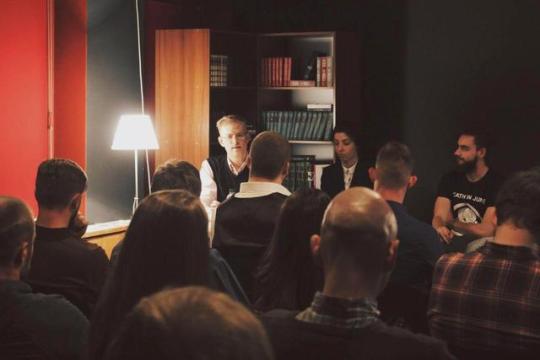

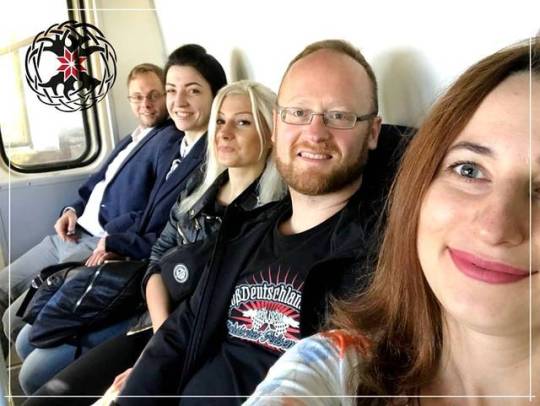
The Azov Movement in the West: achievements in 2019
Despite the fact that the official agenda of National Corps is a course towards Intermarium (Adriatic-Baltic-Black Sea Union), the years 2018 and 2019 were marked not only by regional events of the Intermarium Support Group, founded by Andriy Biletsky, Leader of National Corps, but also by popularization of our project in Western Europe and establishing of cooperation with both friendly Western European parties and those influenced by pro-Russian lobbyists. Along with it, we find sympathizers of Central and Eastern European Union among political forces and media platforms of the United States.
Having engaged in our activities, we adhere not only to the principle of paneuropeanism and alternative universalism, which shall prevent us from regional isolationism in the 21st century. Nor solely to the possibility (yet remote possibility) of the alternative of the EU all-European integration based on Central and Eastern Europe in case of growing animosity and decentralization of Europe.
It is a high time to admit that pro-Russian threat in Europe is tied not only with right-wing populists and “radicals”. After all, such influential right-populist parties like Polish PiS (Law and Justice) and Estonian EKRE (Estonian Conservative People’s Party), which lined up a fifth of seats on parliamentary elections, assume anti-Kremlin geopolitical attitude. Furthermore, namely these parties: both EKRE or Latvian coalition party “National Alliance” – are actual and potential Intermarium Support Group partners.
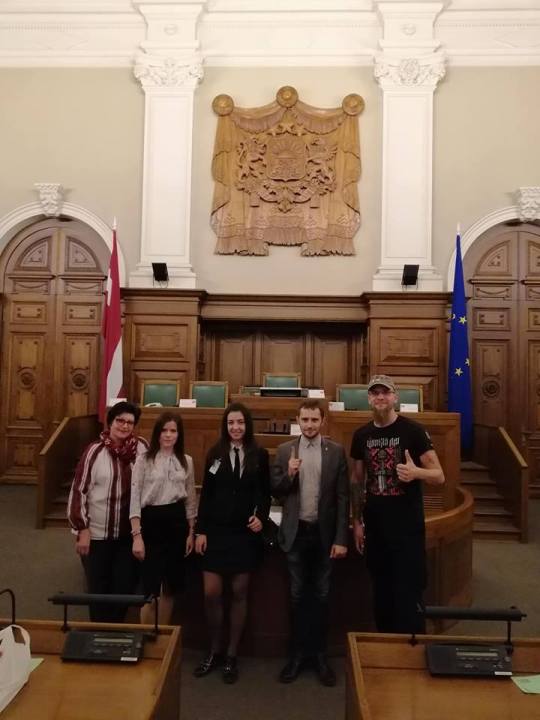
The problem is of another kind: not only a potentially pro-Russian coalition gathers in the European Parliament around the Italian Lega and German AfD – official Berlin, an economic leader of the EU, gradually weakens its resistance against Nord Stream 2, the pipeline which shall be built in circumvention of Ukrainian territory and rests on not only Russian and German but also Austrian, Danish and French funds. Following its own interests, neoliberal European Union persuades Ukraine to “conciliate” with the Russian Federation, which, in its turn, contradicts the interests of the US and some Central and Eastern European Countries only – again, “right-populist”.
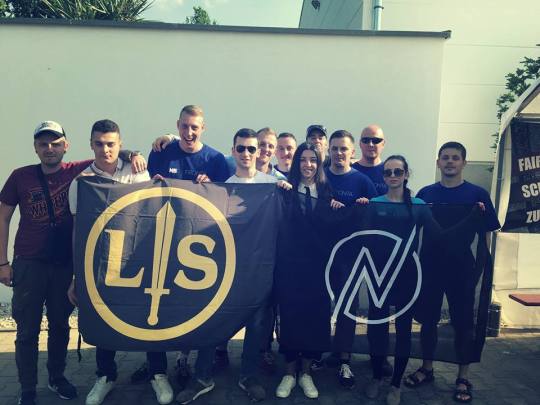
Under such conditions, it is important to prevent the Intermarium Support Group’s activites from deceleration, especially in the light of electoral success of the Finns Party, The Swedish Democrats, Danish People’s Party and other parliamentary forces of the region, which are currently either in the danger zone, or already cooperating with pro-Russian anti-immigration colleagues from Western Europe. Furthermore, given the lack of political unity among such parties, it is worth to give a due time alternative for those willing to think strategically and to avoid the fate of Putin’s fan club.
However, it is no less important to multiply our informational presence in Western European and American informational field via cooperation with “pro-Ukrainian” organizations and even their separate structures.
The starting point of informational expansion of the Azov Movement in the Western European field shall be considered to the Paneuropa Conference, which took place 28 April 2017 in Kyiv under the auspices of all-European Reconquista movement founded in 2015 on the back of mass foreign volunteer support in the National Liberation War in the East of Ukraine. This conference, dedicated to the idea of the alternative to European integration and geopolitical cooperation, gathered representatives of French, Italian, German, Swedish, Croatian, Polish, Lithuanian, Latvian and Russian emigrational political forces supporting a persistent course towards the creation of a sovereign Paneuropean confederation.

On October 15, 2018, the second Paneuropean conference was held in Kyiv, which was visited by local political forces, but also by speakers from Italy, Germany, Norway, Sweden, and the US. Similarly to the constituent conference, it included both the political, party element and the metapolitical component represented by Western intellectuals and bloggers associated with the Third Way, identitarian movement, French New Right (Nouvelle Droite) and American Alt-Right. Both conferences have gathered such prominent Western pro-Intermarium metapolitical thinkers like Gabriele Adinolfi, Pascal Lassalle, Marcus Follin (The Golden One), and Greg Johnson.

Active expansion of the Azov Movement into Western geopolitical and metapolitical sphere has begun with the participation of its representatives Victoria Polunina and Olena Semenyaka in the paneuropean congress named REGeneration Europa, which was organized on May 11-12, 2018, in the German town of Riesa by a youth branch of NPD, Junge Nationalisten. Though a marginal pro-LDNR Russian group was also represented at the conference, which provoked the pro-Ukrainian wing, it was the first mass Western European event marking the start of the further Azov “tour” across Western Europe on the invitations from the interested in the prospects of our cooperation.

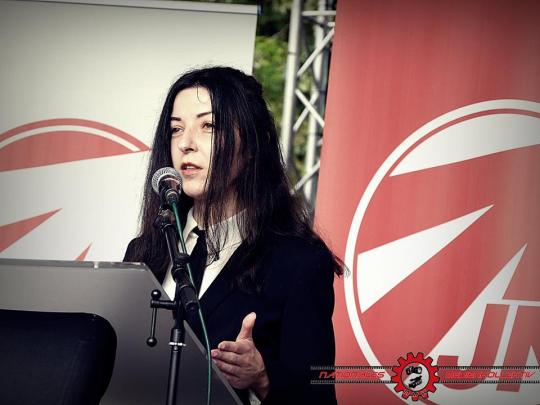
Next year, in spite of a fact that the NPD party has a split on the question of a military and geopolitical conflict between Ukraine and Russia, its youth branch took part in the second Paneuropa Conference in Kyiv and already on February 15-16, 2019 international secretary of National Corps Olena Semenyaka accepted the invitation of the NPD in Saxon Switzerland and the metapolitical center Haus Montag to speak at the event in Pirna in the course of which she described the history of the Azov Movement, the next day after the march in memory of victims of Dresden bombardment.
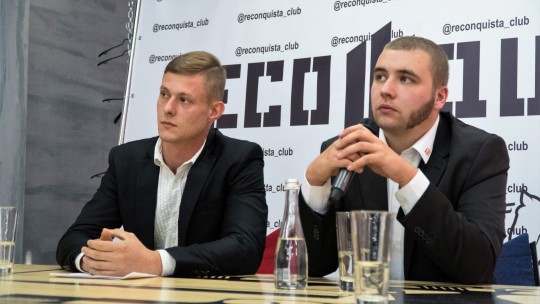
Among all described projects of the Azov Movement, the most challenging, but promising one is the geopolitical program of National Corps: Intermarium defense union as a platform for the alternative to the EU sovereign Paneuropean union. The false rivalry of the West and the Russian Federation creates the unique chance for the intended “buffer zone,” Eastern Europe, to become the center of the restoration of the all-European geopolitical subjectivity.
Moreover, this event was the first in the cycle of events within the framework of the «Ukrainian Year» in Germany, on the initiative of Thomas Rackow, the author of the charity German-Ukrainian-Norwegian Kraftquell (Source of Power) project aimed at organizing the vacation for veteran Ukrainian families in Germany and Norway as a sign of the solidarity of the European family with the belligerent Ukraine. He announced this project during the Paneuropa Conference II in Kyiv and on completion of the speech by Olena Semenyaka in Pirna.

In addition, namely on his initiative, Olena visited the annual convention of autonomous Norwegian nationalists in Eastern Norway who were interested in the geopolitical program of National Corps and supported the Kraftquell project.

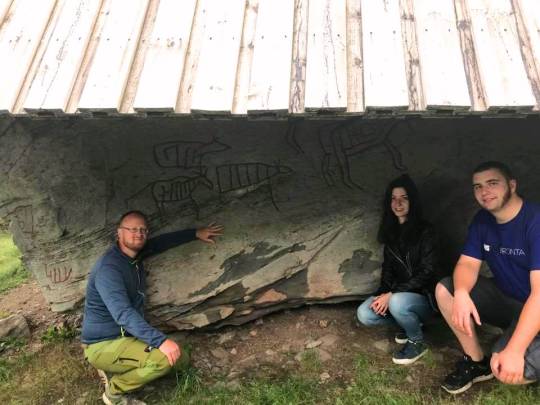
In June 2018, Olena Semenyaka also delivered a speech to the audience of Flamberg Club, the identitarian metapolitical center in Halle, within the framework of an event entitled “Ukrainian Evening: geopolitics, ideas, prospects”. She revealed the basis of Ukrainian state building, identity, the conflict with Russia, history and structure of the Azov Movement and the geopolitical project of Intermarium.
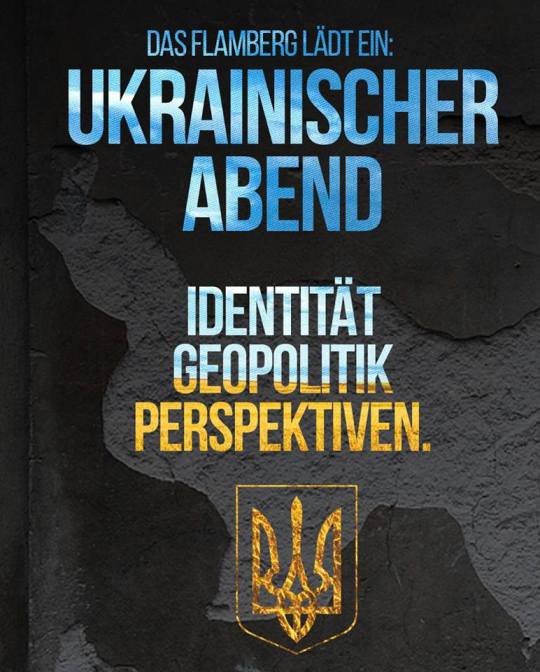
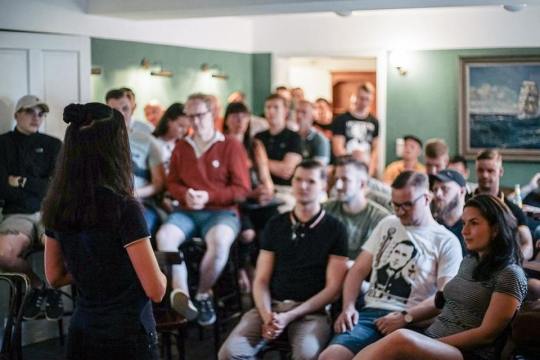
As soon as 3-5 of August 2018, Olena Semenyaka also delivered a lecture at the first Jungeuropa Forum organized in Dresden by Jungeuropa Verlag, the friendly publishing house of identitarian Third Way literature. Olena described to German and Austrian identitarians the geopolitical, cultural and philosophical foundations of Intermarium.
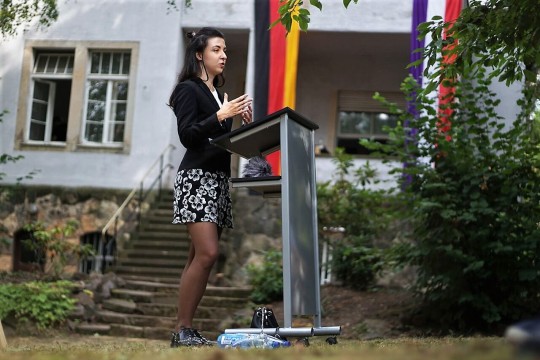
June 7, 2018, Olena Semenyaka revealed the metapolitical strategies of the Azov Movement at the cultural and political event entitled “The Youth Storms” in Kirchheim, Thuringia on the invitation of the German party Der III. Weg (Third Way), a long-time ally of the Azov Movement, the first ones who united with the German branch of the Reconquista Movement in their efforts to destroy the information blockade around the fight of Ukrainian patriots.
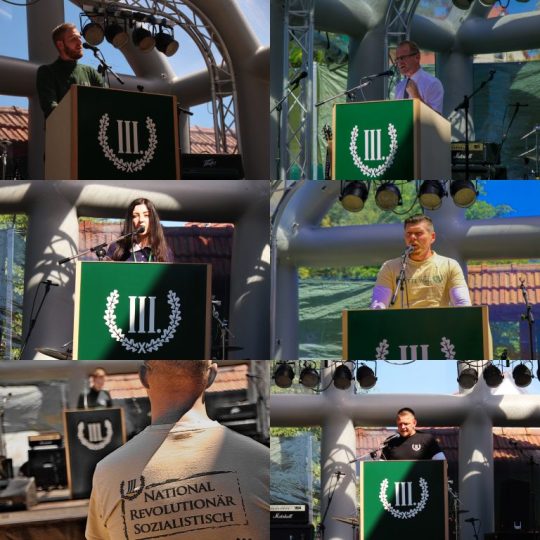
In the wake of the Third Conference of the Intermarium Support Group in October 13, 2018, which, among others, was attended by the representative of the Academic Legion Project of the Ministry of National Defense of Poland Damian Duda and Croatian Armed Force General Brigadier Bruno Zorica, right on February 15-16, 2019, Eugene Vriadnyk, combat veteran of the Azov Regiment, founder of Plomin publishing house, delivered a speech on his vision of archeofuturistic future of Central and Eastern Europe at the Prabudimas Conference in Vilnius, as well as took part in a torchlight procession in honor of the anniversary of Lithuania’s independence, which were organized by the Kryptis ethnofuturist association.

January 7, 2019, Olena Semenyaka participated in the commemoration of three young Italian patriots killed by communists in Acca Larentia massacre. The march, dedicated to the bloody event of the Lead 70-s, has become an all-Italian sacral rite precisely thanks to the activity of Casa Pound Italia. This organization has also brought this event even to the all-European and transcontinental level, gathering participants as far as from Quebec. This visit has strengthened the partnership with CasaPound Italia represented by their international correspondent Alberto Palladino at the Second Paneuropa Conference in Kyiv.
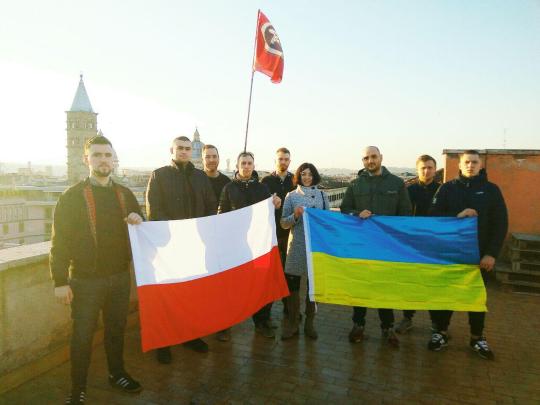

Besides, National Corps has been a participant of the Third Etnofutur Conference, which took place on the 23rd of February in Tallinn. This event is held annually by the youth organization of Estonian People’s Conservative Party (EKRE), Blue Awakening (Sinine Äratus). Traditionally, the strong emphasis has been laid on the conceptual synergy of the nationalist speakers of the Intermarium region. Olena Semenyaka has delivered a speech entitled “Middle Europe in the Age of Caesarism and the Purpose of Ethnofuturism”. In her speech, she mentioned that namely the Azov Movement is the brightest example of Ethnofuturism as a combination of innovative technologies with the policy of protecting ethnocultural identities.

Having referred to Oswald Spengler’s concept of Caesarism as the final period of the historic cycle of the West which began with the first world war, Olena presented Intermarium as space where Old Europe can return to life again entering a new cultural and civilizational turn.
In addition, National Corps sent his representative to support EKRE ahead of parliamentary elections. Fortunately, the allied party showed an exceptionally high result. On February 24, Olena, also traditionally, participated the celebration of the independence of Estonia and anniversary torchlight parade.

On March 30, 2019, Olena Semenyaka spoke at the Pan-Scandinavian Scandza Forum founded by Fróði Midjord. The forum addressed the problems of the lacking freedom and imported chaos in modern Western societies (”Anarcho-Tyranny”). Having investigated the issue in the context of Ernst Jünger’s criticism of neo-totalitarian police state, as well as the need to put modern audiovisual technologies into service of our own historical visions, she called the region of Central and Eastern Europe the space of political freedom where it would be possible to develop the paneuropean infrastructure for such purposes. The event was also attended by members of Swedish Democrats and Alternative for Sweden.
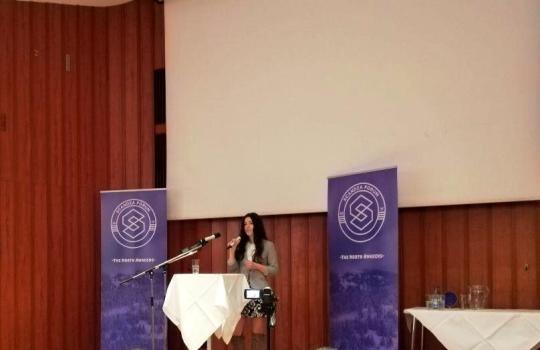
After the Scandza Forum, Olena Semenyaka became the guest of the “Anton och Jonas” video program during which she discussed the course of the Maidan Revolution, the reasons for the geopolitical confrontation with Russia, the milestones of the formation of the Azov Movement and the Intermarium project. Her interlocutors were Anton Stigermark, the representative of the Alternative for Sweden party, the author of the “Memetic Warfare”, who also participated in the MMA tournament at the Kyiv Reconquista Club, and Jonas Nilsson, coordinator of the Boer Project, also the MMA enthusiast and a former instructor of the Azov regiment, which hosted a lot of Swedish military volunteers.
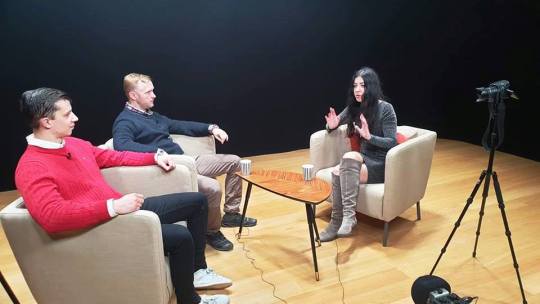
Finally, on April 6, 2019, the National Corps, represented by the international secretary and coordinator of the Intermarium project Olena Semenyaka, took part in the Awakening II Сonference in the Finnish city of Turku. At this conference, Olena made a presentation "Finnish-Ukrainian Cooperation Then and Now As Seen by National Corps” during which she discussed the diplomatic cooperation of Finland with the Hetmanate and the UPR in the previous century, in particular, thanks to the ardent Finnish advocate of the Ukrainian national liberation movement Hermann Gummerus, as well today’s step-by-step integration program of the Intermarium Support Group.
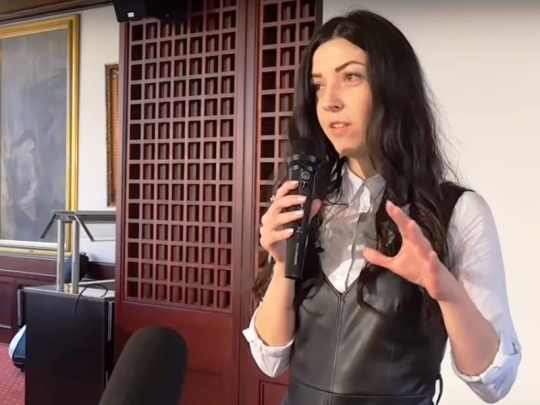
In addition to foreign speakers and guests, the event was visited by members of the Finnish identitarian organization Suomen Sisu and the youth branch of the Finns Party. Finnish audience, which had its own experience of Russian-Finnish wars, was fascinated by the natural geopolitical vector towards Intermarium. It is worth to mention that the Finns Party has lined up 39 parliamentary seats out of 200 during the recent election.
It is planned that Olena Semenyaka will take part in Forum Prisma Actual on May 4, 2019, in Lisbon, on the invitation of Escudo Idetitario, Portuguese identitarian organization. Along with developed Spanish branch of the paneuropean Reconquista movement, Portuguese patriots couldn`t help resonating with the cause of the novel Ukrainian “conquistadors.”

Among the Southern European countries, the great interest in Azov’s activity is shared by Greece whose patriotic audience also feels the cultural and geoeconomic affinity towards the project of Intermarium and invite National Corps to their land.
However, the priority of the Intermarium Support Group for the second half of 2019, of course, is holding the Fourth International Conference bringing the regional European integration to the new level. According to preliminary plans, the conference will be held in Zagreb, a center of the Adriatic angle of Intermarium.
#National Corps#AZOV movement#Andriy Biletsky#Intermarium Support Group#Olena Semenyaka#eugene vriadnyk#Paneuropa#reconquista movement
4 notes
·
View notes
Video
youtube
Mācībās „Baltic Zenith /Ramstein Arrows” pilnveido iemaņas kaujas šaušanā pa gaisa mērķiem (Latvians and troops from Allied countries are improving combat shooting skills at air targets during the live fire exercise "Baltic Zenith/Ramstein Arrows")
Latvijas armija
No 5. līdz 15. jūnijam Dienvidkurzemes novada, Nīcas pagastā esošajā NBS Jūrmalciema militārās aviācijas poligonā norisinās starptautiskās militārās mācības „Baltic Zenith 2022”, kuru laikā Latvijas, Lietuvas, Čehijas un ASV karavīri pilnveido iemaņas kaujas šaušanā pa gaisa mērķiem. Mācībās piedalās aptuveni 300 dalībnieku, tostarp karavīri, zemessargi un civilie darbinieki no Gaisa spēkiem, Sauszemes spēku Mehanizētās kājnieku brigādes, Zemessardzes, Lietuvas bruņotajiem spēkiem, Čehijas un ASV armijas pretgaisa aizsardzības vienībām. Mācību mērķis ir trenēt un profesionāli sagatavot tuvās darbības rādiusa pretgaisa aizsardzības raķešu sistēmu RBS-70, GROM, STINGER un AVENGER speciālistus, veicot praktiskos kaujas šaušanas vingrinājumus pa gaisa mērķiem.
(From June 5 to 15, the international military training "Baltic Zenith 2022" will take place at the NBS Jūrmalciems military aviation range in Nīcas parish, Southern Kurzeme district, during which soldiers from Latvia, Lithuania, the Czech Republic and the United States will improve their skills in combat shooting at aerial targets. About 300 participants are taking part in the exercise, including soldiers, national guardsmen and civilians from the Air Force, Ground Forces Mechanized Infantry Brigade, National Guard, Lithuanian Armed Forces, Czech Republic and US Army Air Defense Units. The purpose of the training is to train and professionally prepare specialists of the short-range air defense missile systems RBS-70, GROM, STINGER and AVENGER by conducting practical combat firing exercises at air targets.
#Latvia#Lithuania#Czech Republic#USA#Allies#NATO#RBS-70#Piorun#FIM-92 Stinger#AN/TWQ-1 Avenger#MANPADS#surface-to-air missile#defense of freedom#Northern Europe#Jūrmalciems#Baltic Sea#aviation history#Baltic Zenith#Ramstein
3 notes
·
View notes
Photo
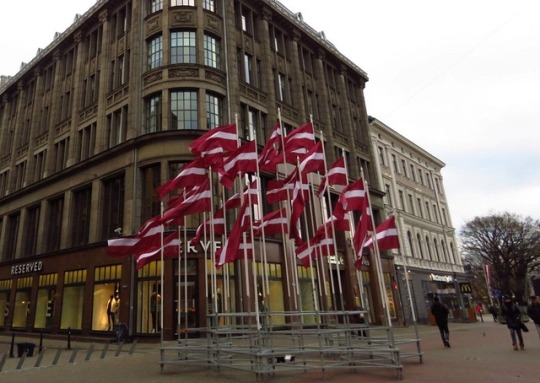
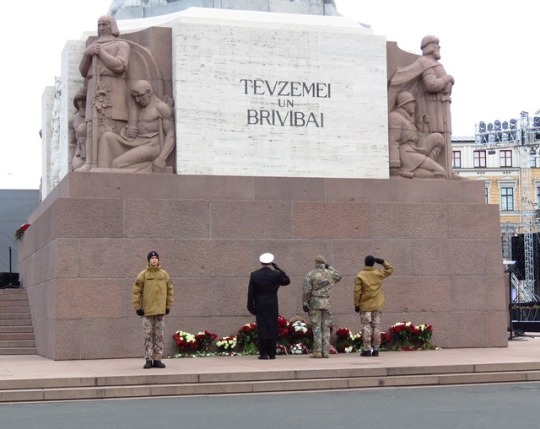


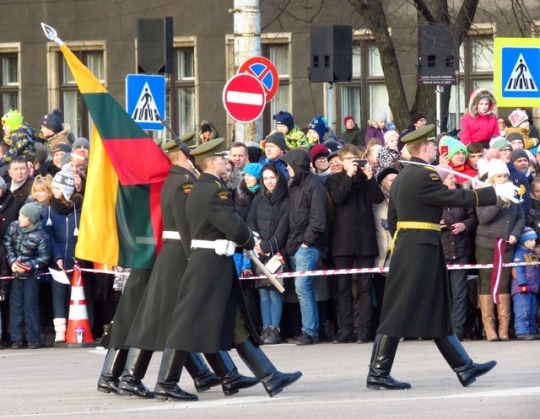
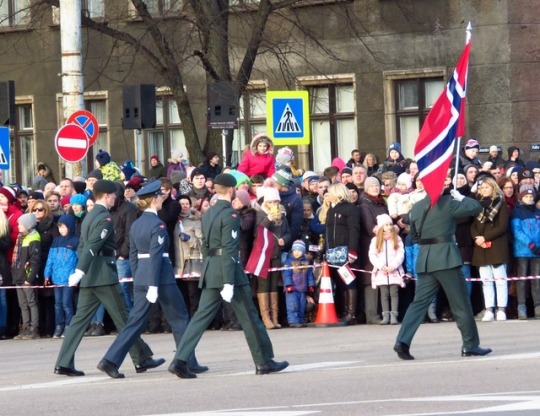

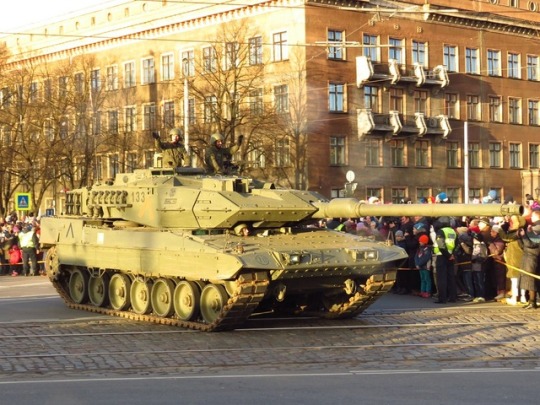
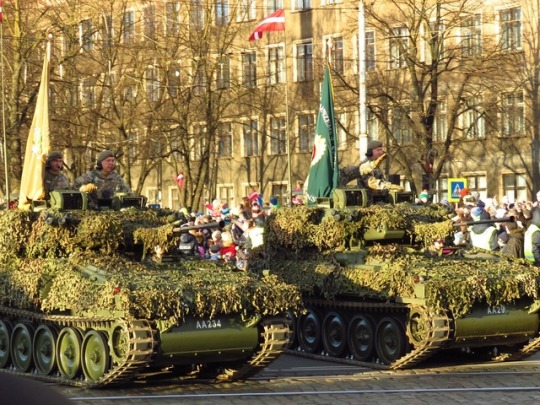
Lāčplēsis Day memorializes the soldiers who fought for Latvian independence in 1919 and is celebrated on 11 November, the date of a decisive battle. All photos by D.
1. A display of Latvian flags before the ceremonies in Riga, the capital city.
2. The day started with a wreath-laying ceremony at the Freedom Monument, with the presidents of Estonia, Finland, Latvia, and Iceland participating.
3. Next was the Latvian National Armed Forces Parade with a contingent from most every NATO state...
4 & 5. ...Followed by a display of Latvian military units and vehicles.
The day ended with a spectacular fireworks show seen here.
3 notes
·
View notes
Text
Fierce Historical Ladies post: Vladka Meed
Part 1: The Ghetto
Vladka Meed, born Feigele Peltel (1921-2012), escaped from the Warsaw Ghetto with a map of Treblinka hidden in her shoe. She smuggled dynamite into the Ghetto, set up covert aid networks in forced labor camps, and journeyed deep into forests filled with partisans—friendly and hostile—to locate Jews who needed her help. Through grief and pain and loss, and at constant risk to her life, she never stopped working to aid her people, even as the Nazis did their best to destroy the world as she knew it.
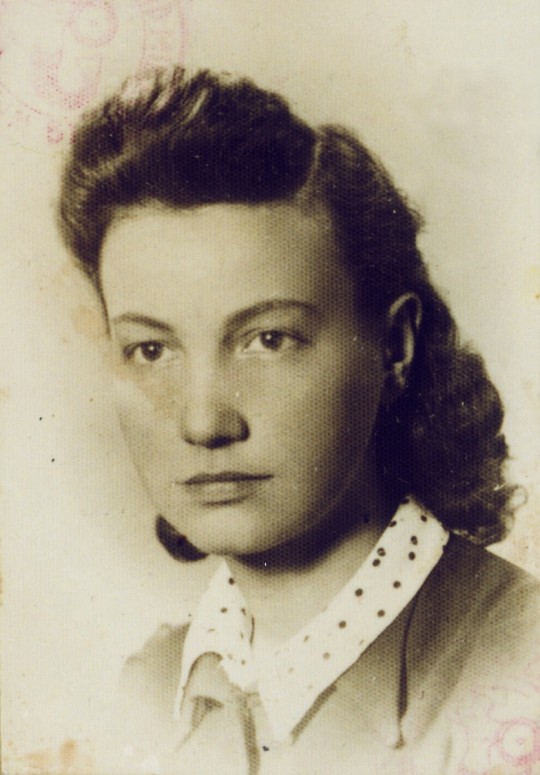
Vladka Meed c. 1942. Image courtesy of the United States Holocaust Memorial Museum.
I am, frankly, in awe of her, and I would very much like for there to be some sort of alternative timeline in which she hung out with Hannah Szenes and Noor Khan (also, Peggy Carter even though she’s not real).
But I digress.
Vladka Meed’s story begins in the unique cultural world of interwar Polish Jewry. In 1921, Jews made up 10.5% of the population of Poland; by 1931, they made up 9.8%.1 In the cities, their representation was even higher: by the early 1930s, they made up 30.1% of the population of Warsaw. The Polish Jewish community was uniquely characterized by its deep commitment to Jewish political parties—the three most important of which were the Bund, Agudath Israel, and the Zionists—and their attendant youth movements, which dominated the social and cultural lives of interwar Polish Jewry.
The youth groups in particular played formative roles in the lives of young Polish Jews.2 Vladka, for her part, was a member of the Bund, a secular Jewish socialist movement which understood Polish Jewry as an autonomous nation whose destiny was tied inextricably to that of the Poles. The Zionist movement was split into many separate groups and parties, their politics ranging from far right militarism to far left Marxism. Agudath Israel was a religious party which rejected Zionism and secularism, and united Orthodox and Hasidic Polish Jewry.
When the Nazis marched into Poland, they began their campaign of dispossessing and ghettoizing Polish Jewry.
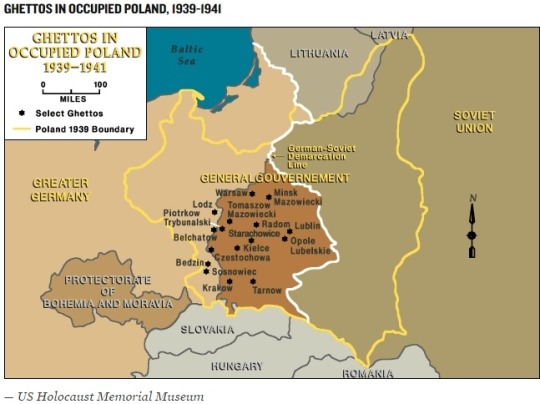
They initially paid little attention to the youth groups, and in this slight bubble of freedom the youth groups slowly transformed into centers of the nascent Jewish resistance. Vladka, for example, worked on her Bundist youth group’s illegal newspaper, and worked to organize illegal children’s groups.

A page from a 1942 edition of the Bund’s underground newspaper, perhaps one Vladka worked on. Image courtesy of Yad Vashem.
At first, the youth groups functioned as their own separate, ideologically defined universes. As the Nazis isolated Jewish communities across Poland, the youth groups and their attendant parties, cut off from their members in other towns and cities, reached out to their membership for volunteers to carry information and correspondence to their far-flung comrades. The majority, and most successful of these volunteers, were female, some as young as fifteen.
These volunteer couriers transported papers, documents, forged identity cards, underground newspapers, and money in and out of the isolated Jewish communities—and later ghettos—of Poland. These couriers had only limited protection from certain death: passing Gentile features or hair dye and makeup to disguise their traditionally “Jewish” features, forged papers, genitalia which could not betray their Jewish identities, and a manner of gendered socialization which prepared Jewish women and girls to be able to engage with both the Gentile and the Jewish communities.3 These female couriers became the backbones of their youth groups, and, as Nazi policy towards the Jews shifted from isolation to extermination, of the organized Jewish resistance.4
In Warsaw, the isolation began in autumn 1940 as the Nazis ordered the establishment of the Warsaw Ghetto on October 2, and sealed it on November 16.
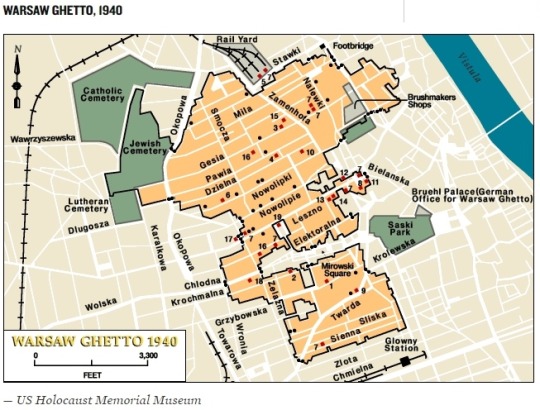
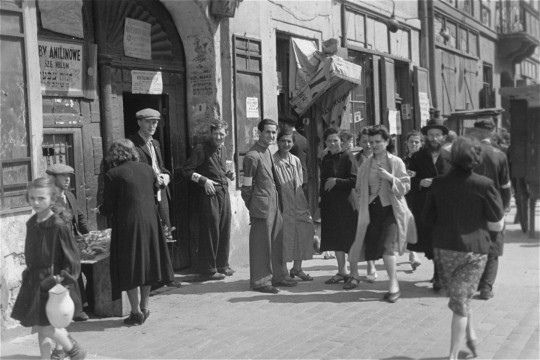
Warsaw Ghetto street scene, 1941. Image courtesy of the United States Holocaust Memorial Museum.
Between 300,000 and 440,000 people behind lived within its walls, and inside, conditions inside were grim. In 1941, 5123 Jews died of starvation and disease. Included in their number was Vladka’s father, Shlomo Peltel, who died of pneumonia.
On July 19, 1942, Heinrich Himmler ordered the liquidation of the Warsaw Ghetto. It went like this: the Nazis and their Ukrainian troops surrounded the living and working quarters in the Ghetto, building by building, and ordered all Jews to exit. Upon rounding up a large enough group, the Nazis either marched them or sent them via truck or streetcar to the assembly and deportation point (the Umschlagplatz). There, the Nazis loaded the rounded up Jews into sealed freight cars bound for Treblinka.

Jews make their way to the deportation point. Image courtesy of the United States Holocaust Memorial Museum.
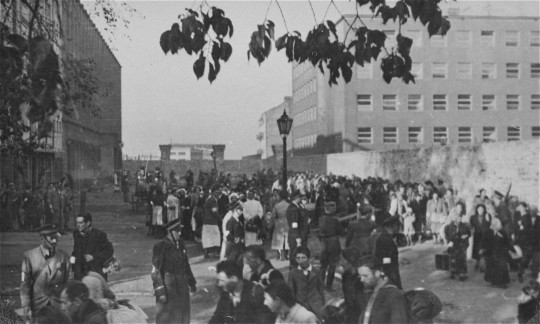
Jews assembled at the deportation point, 1942. Image courtesy of the United States Holocaust Memorial Museum.

Train platform at the deportation point. Image courtesy of the United States Holocaust Memorial Museum.
The deportations ended on September 12, 1942. Only 10% of the ghetto’s original population remained. That 10% generally consisted of men between the ages of 15 and 50, and strong, healthy young women able to perform labor. These individuals, initially cleared for survival because of their youth and strength, were generally the only remaining members of their families left in the ghetto. Vladka was no exception: her mother Hanna, her fifteen-year old brother Chaim, and her sixteen-year old sister Henia all perished in Treblinka that summer of 1942.
Those who remained asked themselves how this had been allowed to happen, how 50 Germans and 400 supplementary Ukrainian and Latvian policemen had been able to ship 350,000 of their friends, families, comrades, coreligionists, and loved ones to their deaths without encountering a lick of resistance.5
In the early days of the deportations, few knew where the trains were headed. The youth group and party leadership knew. So did the Polish underground and their allies in the Bund. But Nazi disinformation campaigns easily overtook the power of these “rumors.” Warsaw Jewry was desperate for any shred of hope; when the Nazis forced Jewish prisoners to send cheery postcards homes from Treblinka, their friends and families clung to the false promises contained within these missives. And as they did so, they reacted with anger and hostility towards any Jews spreading information to the contrary, including the stories of those managed to escape from the death camps and make their way back to the ghetto.
Further, it was not, and is not, true that no one tried to resist. In mid-March, 1942, Yitzhak Zuckerman, a leader of Dror—one of the labor Zionist youth groups—called a meeting between himself, the representatives of the other Left and Center Zionist youth groups, party leaders, and the Bund to discuss the formation of a cooperative resistance group.

Yitzhak “Antek” Zuckerman. Image courtesy of Yad Vashem.
However, the attendees feared that any attempt to resist would be met with collective retaliation, and the Bund representatives were comfortable with neither the idea of acting apart from the Polish underground, nor with the Zionist undertones of the meeting. The meeting ended, with little accomplished.
When the deportations began in July, the Center/Left Zionist groups decided to move forward without the Bund, and founded the Jewish Fighting Organization (the Zydowska Organizacja Bojowa, or ZOB) on July 28, 1942. The ZOB’s first months were riddled with failure and tragedy. Those few Jews aware of their existence distrusted them, perceiving them as dangerous provocateurs. The Nazi captured, executed, and/or deported many ZOB leaders in these early months, and many more of the party and youth group leadership—including those who had called the March meeting—fled the ghetto on the eve of the deportations. These losses, combined with the enormity of the deportations, left the remnants of the ZOB shocked, hopeless, and despondent.
But in a perverse way, it was the magnitude of the deportations which allowed the ZOB to flourish. Those who remained in the Ghetto could no longer view the ZOB as dangerous, because the ghetto had already suffered the worst. Further, the party leaders who fled before the deportations—Mordecai Anielewicz, Yitzhak Zuckerman, and Zivia Lubetkin (the Hero of Another Story/FHL post)—returned to the ghetto in September.

Mordecai Anielewicz. Image courtesy of Yad Vashem.
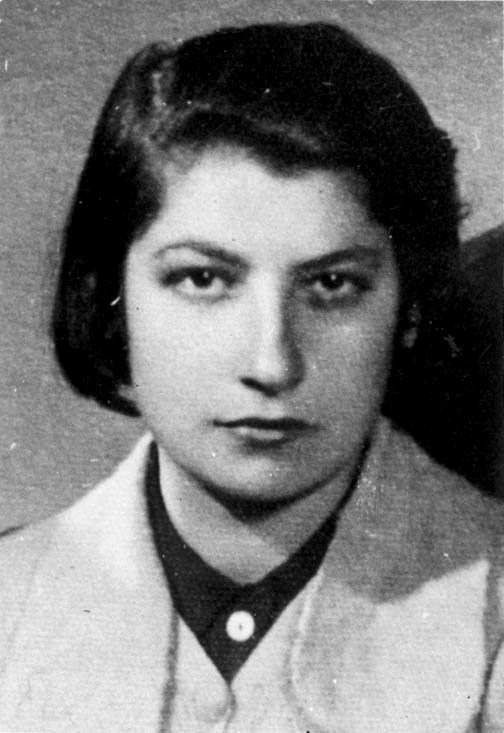
Zivia Lubetkin. Image courtesy of Yad Vashem.
In this new atmosphere, the ZOB was finally able to create a military and political framework for an organized Jewish resistance. The ZOB remained the military arm of the organization, while the Jewish National Committee—which included in its body representatives from all of Warsaw’s Jewish parties and youth groups—acted as the organization’s political arm.
In addition, the Bund soon re-entered talks with the ZOB. To bring the Bund, and its contacts in the Polish underground, into the fold, the ZOB developed a third arm: the Jewish Coordinating Committee. The Jewish Coordinating Committee governed the resistance, and spoke on the behalf of the ZOB and the Jewish National Committee in negotiations with Polish underground representatives and potential Gentile allies. By the end of October, 1942, the Jewish underground had achieved what was impossible only a few months earlier: solidarity between and within the Jewish political and ideological streams of Warsaw.6
As October moved into November, Abrasha Blum, one of the leaders of the Bund, called a meeting of all remaining members of the Bund and its youth group.
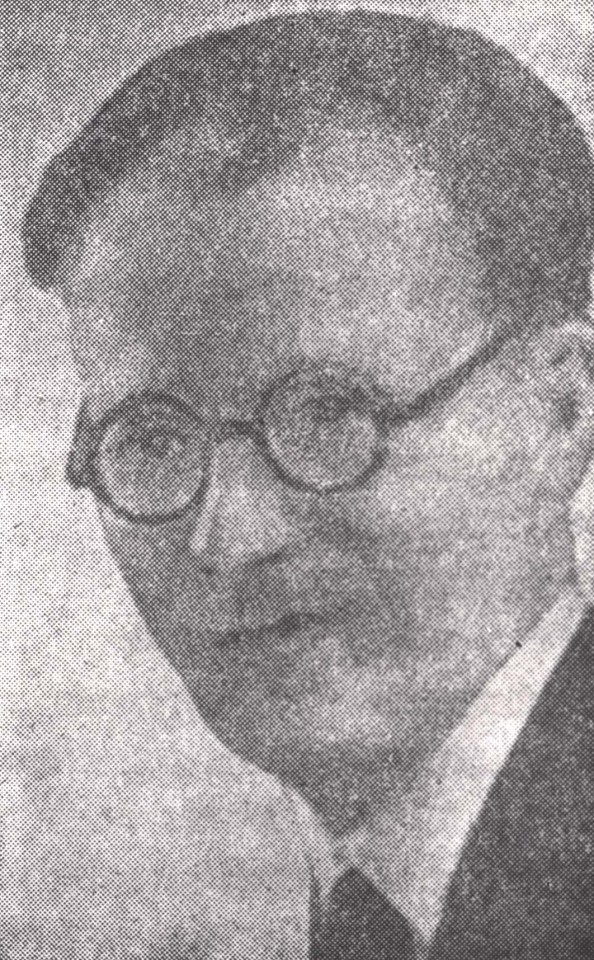
Abrasha Blum. Image courtesy of Yad Vashem.
He opened the meeting with the news of the organization of a joint resistance effort, and the creation of the Jewish Coordinating Committee. Abrasha then briefed them on the goals of the resistance: to smuggle women and children out of the ghetto, to smuggle weapons and dynamite into the ghetto, and to train and organize fighting groups in preparation for an uprising against the Nazis when they, inevitably, returned to complete the liquidation of the ghetto.
When he finished speaking Abrasha began to assign missions to all of those present. Finally, it was Vladka’s turn. He noted her distinctly Gentile looks (in her own words, “a rather small nose, grey-green eyes, straight light brown hair”) and made her an offer: if she chose to accept it, her mission would be to cross into the “Aryan” side of Warsaw, and act as a courier in support of the goals of the resistance. Vladka, of course, accepted.
She was to tell no one of her mission, and wait quietly to receive her orders. Two or three weeks later, one night in early December, Michal Klepfisz, an old Bundist colleague of Vladka’s already stationed outside of the ghetto, appeared at her door. “I’ve come to take you away, Feigel,” he said.
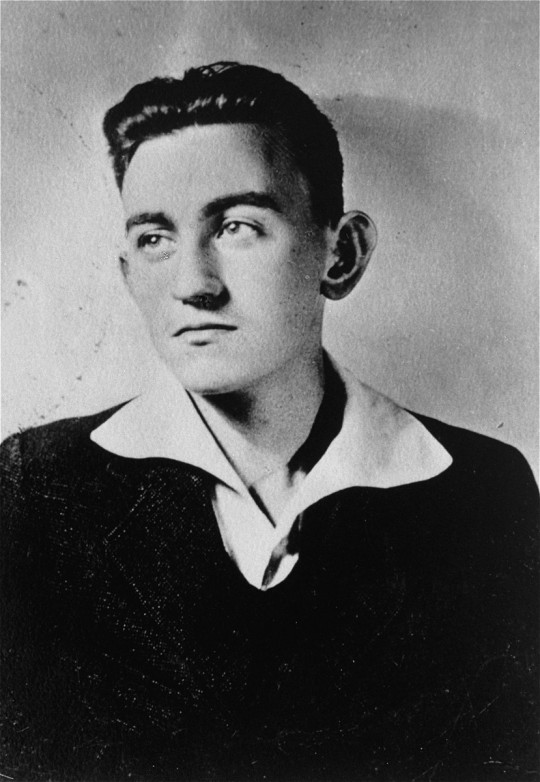
Michal Klepfisz. Image courtesy of the United States Holocaust Memorial Museum.
“Get ready; you’ll be leaving the ghetto within two days.”7 He instructed her to conceal a copy of the underground newspaper (which included a detailed map of Treblinka) on her person, bribe a leader of one of the labor battalions employed in a factory outside of the ghetto, and leave the ghetto with the battalion, posing as a member. She was then to meet him outside the gates on the Aryan side of Warsaw at 8am.
Two days later, at 6am on the morning of December 5, 1942, Vladka left her apartment for the last time, the illegal literature concealed within her shoes. Following orders, she bribed a leader of one of the labor battalions and joined their ranks. Unfortunately, she was immediately conspicuous of one of the few women in the group. Suspicious, a guard ordered her to stop, and report to a small wooden shack for questioning.
With no other recourse, Vladka obeyed. Inside, she waited in a small room, its walls papered with maps, charts, and pictures of half-naked women; all were spattered with blood. A guard entered shortly, and ordered her to strip in order to search her clothing for contraband. Vladka tried to keep calm; she assured herself that everything would be fine so long as he did not order her to remove her shoes. But, of course, he did. Vladka stalled, unlacing her shoes as slowly as possible. The guard had no patience for this. He ordered her to hurry up, and began to advance on her with a whip. At the last minute, a second guard ran breathlessly into the room. Another Jew, it seemed, had fled the premises. Vladka’s guard swore, and the two ran out of the room, leaving Vladka alone with her partially unlaced shoes. She hurriedly dressed, and slipped out of the room. A third guard stopped her outside the shack, but she convinced him that she had passed inspection.
When Vladka returned to the labor gang, all of its members were shocked to see her emerge alive, unscathed and in one piece; most of those sent into the shack never came back out. She marched with them through the gates, into the “Aryan” side of Warsaw. Outside the ghetto, the battalion members boarded a wagon, their transport to their work assignment. When the ghetto walls were out of sight, Vladka, at the urging of the rest of the gang, who knew that she was on a mission of some sort, removed her white armband (all Jew were required to wear one) and jumped (in 1991, she recounted this experience in an oral history).

Two Jewish men at work in a ghetto factory, c. 1941/1942. Note the armband worn by the man in the background right. All Jews had to wear it, and it is what Vladka pulled off before she jumped. Image courtesy of Yad Vashem.
She was free, but it was an odd sort of freedom, “…it was as if nothing had happened in the last two years. Trolleys, automobiles, bicycled raced along; businesses were open; children headed for school; women carried fresh bread and other provisions. The contrast with the ghetto was startling. It was another world, a world teeming with life.”
Michal Klepfisz had waited for her outside the gates with his Gentile landlord and ally to the Jewish underground, Stephan Machai for hours. Finally, they had returned home, hoping that Vladka had noticed how strict the guards were that day and retreated. Yet, early that afternoon, they heard someone banging on the door of the cellar of Gornoszlonska 3—the address Michal had had her commit to memory before leaving the ghetto. A blonde woman opened it, and there, to her relief, stood Michal Klepfisz.
Her life as an underground operative for the Jewish resistance began. In a period of five months, she would encounter more danger, isolation, fear, and intrigue than she ever dreamed possible as she worked single-mindedly to prepare the Warsaw Ghetto for an uprising.
about me
ask me a question
twitter
1 They made up the largest Jewish population in non-Communist Europe.
2 The 1930s were not a good time for young Polish Jewry. Global economic downturn threatened everyone’s future, while renewed anti-Semitism gave way to public violence, and segregation from and within universities and professional organizations. In short, Polish youth seemed to have no future. Those traditional centers of authority: the family and the rabbis, could not seem to offer any solutions to the problems of young Jewish people. So, they turned instead to the youth groups. Whole classes of Jewish children and adolescents joined one group or another, and looked to the group and party leadership for guidance and authority. These groups even ran school and summer camps.
3 In that time and place, Jewish girls typically attended secular academies taught in Polish—this gave them the ability to speak fluent Polish without the Yiddish inflection so easily identifiable to gentile Poles. Their mothers and communities socialized these girls to be able to maintain a household, raise their children in line with both Polish and Jewish cultural values, and to potentially run the family business. In short, these women were socialized to be able to comfortably navigate the world inside and outside of the Jewish community. Jewish boys, on the other hand, typically attended religious academies taught in Yiddish, and were socialized to dedicate their lives to religious study, and the small number of trades and occupations open to Jews. In short, Jewish boys were socialized to operate primarily within the Jewish sphere of Polish life. There was also the matter of circumcision: if a Jewish man were caught and ordered to drop his pants, his body would clearly betray his Jewish identity. Women’s bodies could not give them away in this matter. Please note that these gender norms reflected social ideals, not lived realities. For more on these particular gender roles, see Gender and Assimilation in Modern Jewish History: The Roles and Representation of Women (Samuel and Althea Stroum Lectures in Jewish Studies) by Paula E. Hyman.
4 The article, The Female Couriers During the Holocaust, provided me with much of this information on the female couriers. Definitely worth a read.
5 In addition to those sent to their deaths at Treblinka, 11,580 were sent to forced labor camps, 8,000 escaped to the Aryan side of the city, more than 10,000 were murdered in the streets during the roundups, and 20,000-25,000 successfully evaded capture; the Nazis referred to the latter group as “illegal residents.”
6 Mostly. Betar, the youth arm of the right-wing Zionist Revisionist party, did not join. It could not agree with the ZOB on issues of tactics and leadership, and founded its own, independent resistance group: the Jewish Military Union (Zydowski Zwiazek Wojskowski, or ZZW).
7 All direct quotations in this post series are from Vladka Meed’s 1948 memoir, On Both Sides of the Wall unless otherwise noted.
#holocaust#history#jewish history#polish jewish history#warsaw ghetto uprising#fierce historical ladies
114 notes
·
View notes
Text
Latvia to Purchase Four MD 530F Light Attack and Reconnaissance Helicopters
Latvia will purchase four MD 530F light attack and reconnaissance helicopters intended for the Latvian National Armed Forces from the United States, intended for providing close air support and which can be armed. The purchased light attack helicopters will help carry out air operations against enemy targets at close range, provide air support for combat search and rescue operations, as well as carry out tactical reconnaissance and transport operations. In peacetime, however, these helicopters will be used to maintain the qualifications of Latvian Air Force pilots of the National Armed Forces.
Latvia will purchase four MD 530F light attack and reconnaissance helicopters intended for the Latvian National Armed Forces from the United States, intended for providing close air support and which can be armed. The purchased light attack helicopters will help carry out air operations against enemy targets at close range, provide air support for combat search and rescue operations, as well as…

View On WordPress
0 notes
Text
Saab Receives Latvian, Estonian Orders for Carl-Gustaf M4 Weapon Systems
#Saab receives #Latvia, #Estonia orders for Carl-Gustaf M4 weapon systems. #CarlGustafM4
Saab has received orders from Latvian Armed Forces and Estonian Armed Forces for deliveries of Carl-Gustaf M4 weapon systems.
The orders are placed within a framework agreement signed by the Swedish Defence Materiel Administration (FMV) in June 2019, which allows Sweden, Latvia and Estonia to place orders for Carl-Gustaf M4 weapon systems during a ten-year period. Deliveries will take place in…
View On WordPress
#Carl Gustaf recoilless rifle#Estonia#Estonian Defence Forces#Latvia#Latvian National Armed Forces#Recoilless rifle (RCLR)#Saab
0 notes